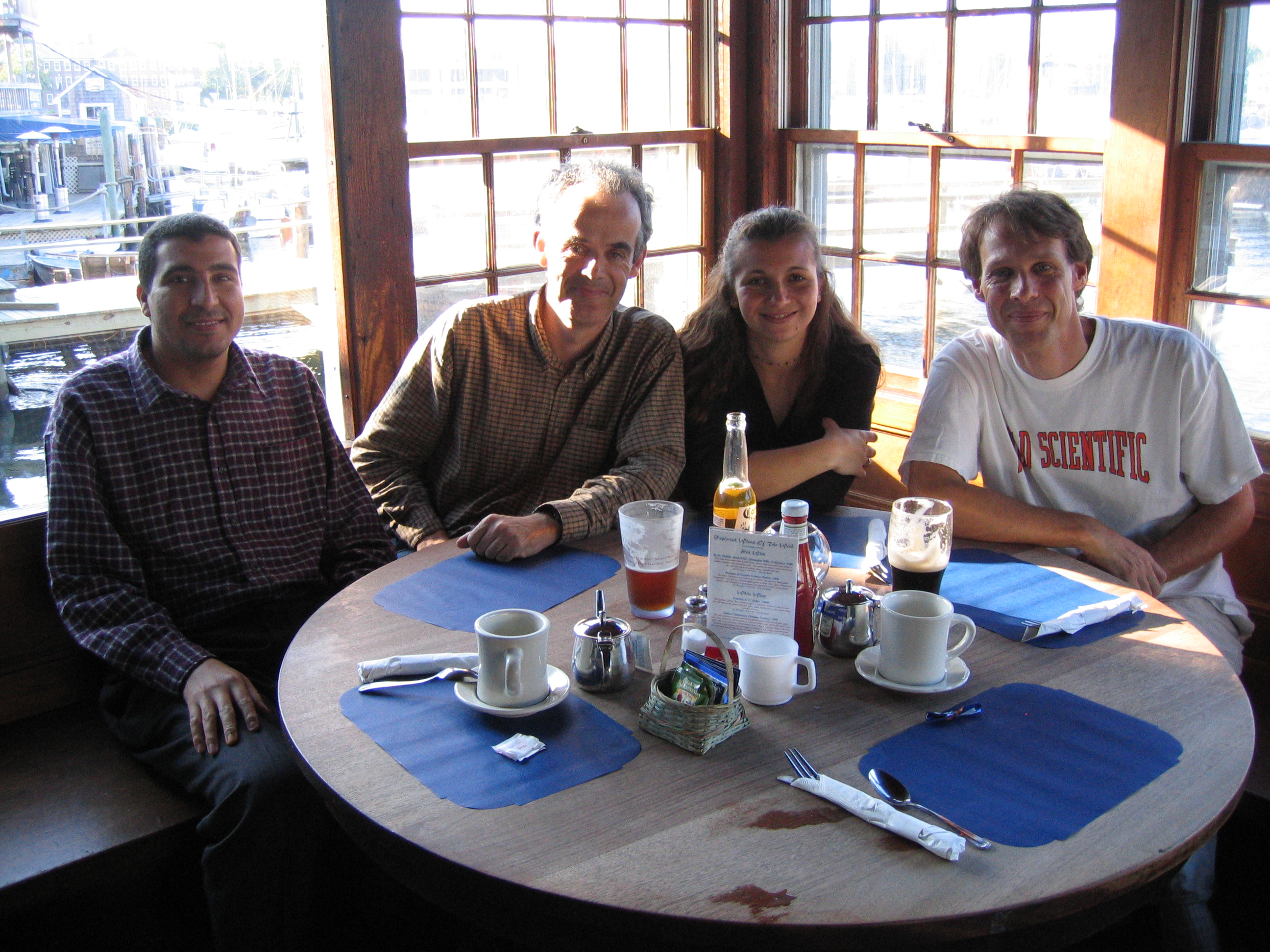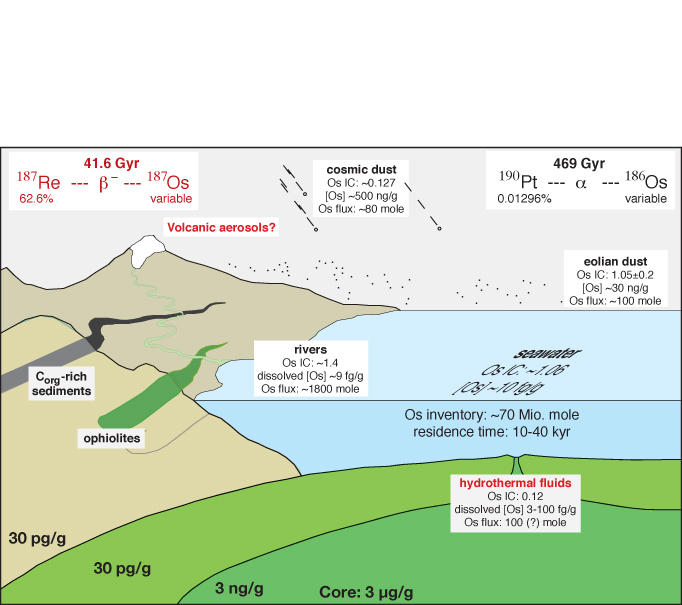The marine osmium isotope record
Greg Ravizza and I, with the help of Tracy Atwood (Abbruzzese), several students, Postdocs and Guest Investigators, and funding from the National Science Foundation (OCE-0118380, OCE-0525880, EAR-9417948) have been reconstructing the marine osmium isotope record (specifically, the 187Os record) since 1993 (Peucker-Ehrenbrink et al., 1995, EPSL 130, 155-167). Osmium (10 fg/g in seawater; Woodhouse et al., 1999, EPSL 173, 223-233) has a residence time in seawater of about 15,000 years (Peucker-Ehrenbrink & Ravizza, 1996, Geology 24, 327-330). It is thus reasonably well-mixed in the oceans and records the balance of inputs from continental weathering, hydrothermal systems at the sea floor, extraterrestrial matter and, possibly, volcanic exhalations.
In collaboration with Dr. Candace Martin from Otago University, New Zealand, we have been investigating the behavior of osmium in the Fly River estuary (Martin et al., 2001, GCA 65, 3193-3200). The data document non-conservative behavior of osmium in the salinity gradient and are consistent with earlier findings (Woodhouse et al., 1999, EPSL 173, 223-233) of non-conservative behavior (removal) in the oxygen minimum zone of the eastern equatorial Pacific.
The marine osmium isotope record is unique among radiogenic isotope records, in that it records a global signal that is sensitive to short-term (glacial-interglacial) perturbations. This is in contrast to the well-known marine strontium isotope record, that - due to its long residence time of about two million years - is sensitive to long-term forcing (tectonic processes). In addition, the marine osmium isotope record is sensitive to the affects of extraterrestrial matter. For instance, the effects of the impact at the Cretaceous-Tertiary boundary can be clearly distinguished from the contemporaneous eruption of the Deccan traps (Ravizza & Peucker-Ehrenbrink, 2003, Science 302, 1396-1398). A summary of our understanding of this marine isotope system has been published a decade ago (Peucker-Ehrenbrink & Ravizza, 2000, Terra Nova 12, 205-219). A more recent review of the use of osmium isotopes as stratigraphic markers in the marine environment will be published in the summer of 2012 as part of The Geologic Time Scale 2012 (Gradstein et al., Eds.)
We are currently working on the detailed record of the Eocene-Oligocene transition (Ravizza & Peucker-Ehrenbrink, 2003, EPSL 210, 151-165; Dalai et al., 2006, EPSL 241, 477-492) and the effects of the Ethiopean flood basalt eruptions on the marine osmium system.
Greg Ravizza (Hawaii), Mukul Sharma (Dartmouth) and I have been funded (NSF OCE-0751616 "Collaborative Research: Intercalibrating Analytical Methods for Osmium Isotopes ad Concentrations in Seawater") to optimize analytical methods for analyzing the concentration and isotope composition of osmium in seawater. We have secured homogenized, filtered and acidified water samples from the shallow and deep Sargasso Sea near Bermuda in the Atlantic Ocean. Splits of these samples are available to interested participants in the intercalibration effort. Painstaking work by Mukul Sharma showed that spike-sample equilibration requires prolonged treatment at high temperatures (275-300 degrees centrigrade), and that subtle contamination from storage bottles require careful attention to cleaning procedures and bottle materials.
Partners/Collaborators
Prof. Greg Ravizza (Univ. Hawaii), Prof. Tarun Dalai (Indian Inst. Technol.), and many students, postdocs and other lab personnel.

From right to left: Greg Ravizza (Univ. Hawaii), Tracy Abbruzzese (now Atwood), Jerzy Blusztajn and Guest Investigator Hassan Baioumy (Cairo, Egypt) at the Cpt. Kidd in Woods Hole. (BPE May 2004)

A schematic representation of major reservoirs and fluxes relevant to the cycling of osmium in near-surface geochemical reservoirs (BPE)